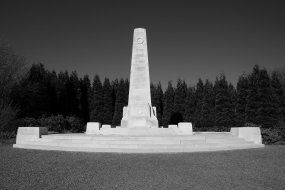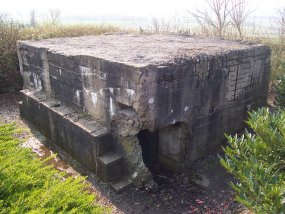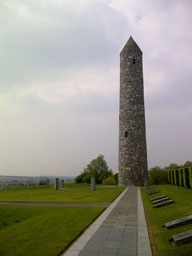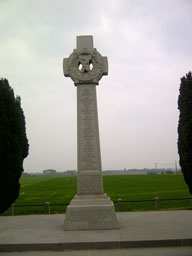
WWII: Maginot Line | Normandy | V-Weapon Sites | Arnhem
Further afield: Crete
| Home Tracing Military Ancestors Travel Advice CWGC Cemeteries Iron Harvest News Book Reviews Glossary Links Contact Me Ypres:
 
|
Core Location 12 – New Zealand Memorial Park, Mesen
Directions – From Croonaert Wood, return to Wijtschate village and turn left to meet the road to Mesen (N365). When you reach this main road turn right – Mesen is 2.5km further on. Pass straight through the centre of Mesen and take the right road just as you’re exiting the village signposted to the New Zealand Memorial Park. The Park is 100 yards on your left. Practical Information – As you’ll find with most of the locations in the southern half of the Salient, except in high summer, most sights are relatively visitor-free. The New Zealand Memorial Park is no exception. The Memorial Park is of interest because it contains two German bunkers, which supported the frontline defences in this sector. Also of interest in Mesen is the London Scottish Memorial which is on the left as you approach the town from the direction of Ieper on the N365, and the Island of Ireland Peace Tower and Park. The tower and park can be reached by a track from the rear of the New Zealand Memorial Park. It is also worth visiting the small museum in the main town square if you have time, although it is worth ringing ahead to check opening times.
Historical Notes – As with the rest of the Messines Ridge, the area was captured by the Germans during First Ypres and fortified. On 7th June 1917 it was assigned to the New Zealand Division with the task of taking the southern part of the ridge including Messines village itself. The division was apprehensive as a mine, planned to destroy the strongpoint of La Petit Douave Farm (further down the slope ½ km due south of the Memorial Park) had to be abandoned when it was discovered and flooded by the Germans in 1916. Luckily, for the New Zealand 1st Rifle Brigade who assaulted it, it was lightly held and soon overcome – 40 German prisoners being taken. Then, the 3rd Brigade who, by keeping close to their “creeping” protective barrage gave the defenders no time to man the parapets, took the two bunkers within the grounds of the park. With their first line of defences lost, the Germans prepared to defend Messines village itself. As dawn broke, however, New Zealand units, fresh from their successes on the slopes of the ridge, began to push into the village with bayonet and grenade. German resistance was stout in places but during the course of the morning the New Zealanders, using smoke bombs to subdue the defenders, began to gain the upper hand. It was during the fight for the village that Lance Corporal Samuel Frickleton was awarded a VC for rushing a machine gun post that was holding up the advance and then destroying another. By the end of the day the New Zealand Division was well established on the eastern slope of the ridge. Messines had been taken. |
||||||||




